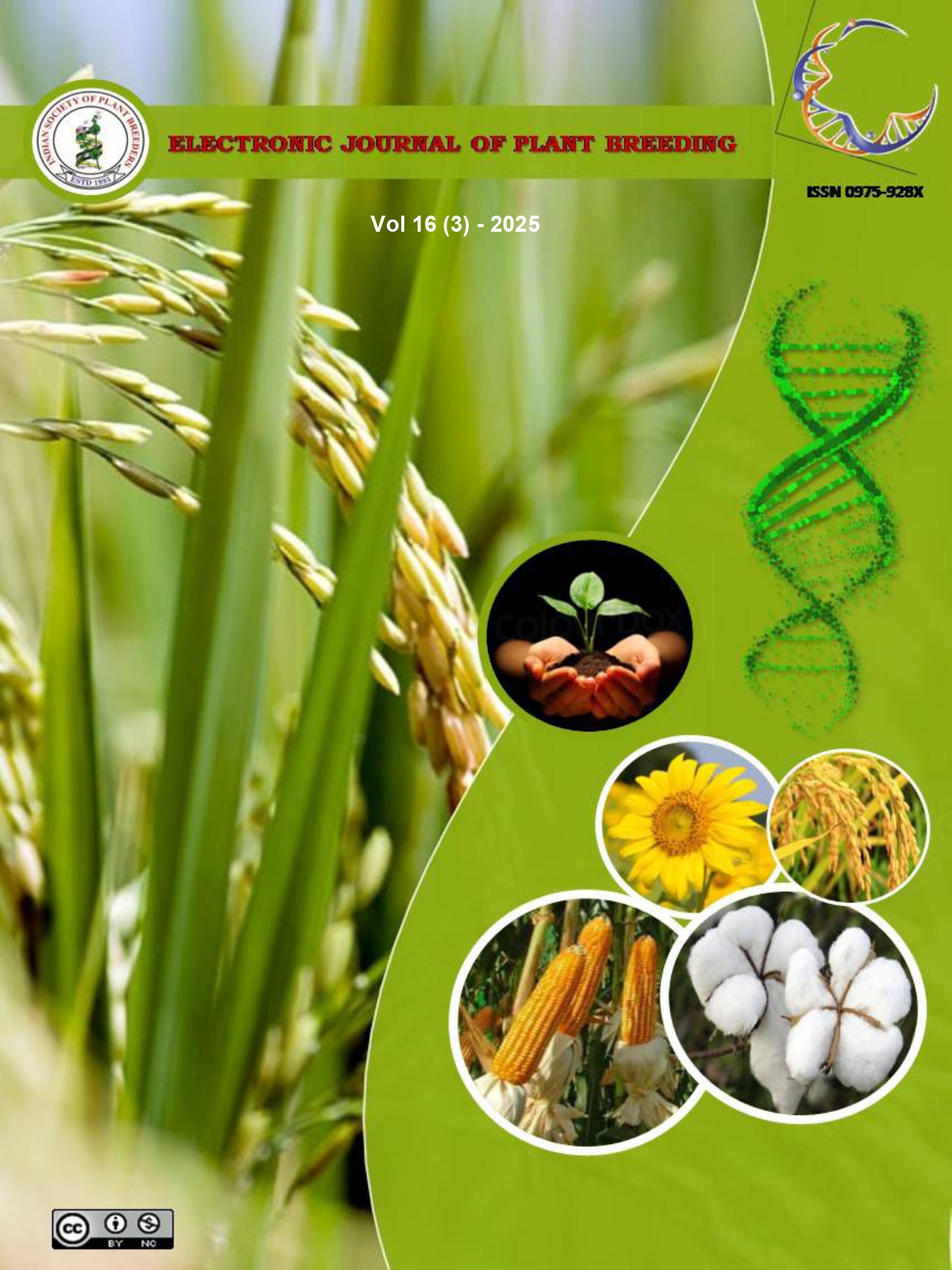Evaluation of stability for root yield and its attributing traits in ashwagandha [Withania somnifera (L.) Dunal]
Abstract
An experiment to evaluate the stability of Ashwagandha genotypes was conducted during the Rabi season of 2022-23 across three different environments. A significant genotype x environment (G x E) interaction was observed, indicating a strong environmental influence for all the traits studied. Based on the stability parameters, the crosses L13 x T3, L14 x T3, L15 x T3, L13 x T1, L3 x T2, L6 x T2, L12 x T2, L13 x T2 and L14 x T2 showed non-significant deviations, bi values less than unity (bi<1) and a mean higher than the general mean (2.75), indicating above average stability. The crosses L4 x T1, L7 x T1, L8 x T1, L7 x T2, L2 x T3 and L12 x T3 showed a mean higher than the general mean (2.75) and bi values more than unity (bi>1), indicating below average stability for dry root yield. Among the checks, JA-20 showed regression coefficient less than one (bi<1) and mean higher than the check mean (4.50) indicating above average stability for dry root yield. Therefore, the identified stable genotypes can be effectively utilized in breeding programs aimed at improving dry root yield and alkaloid content in ashwagandha.

